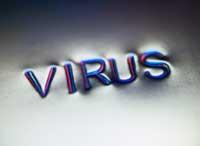Terrorist obsession: also in scientific journals

Americans are obsessed and terrorized by terrorism, and their scientific journals are no exception. Editors of 36 journals have presented the protocol to address information that terrorists can use to develop biological weapons. Among the most prestigious journals are Science, PNAS and the New England Journal of Medicine in the United States and the British journal Nature.
Editors of these and other journals, convened by the American Association of Microbiology, met in early January. The association was concerned that articles on bacteria and diseases can be a source of information for terrorists. It was proposed to analyze what and how to publish, as is done with studies on nuclear energy.
The assembled editors have presented the results of the meeting and the preliminary protocol through a joint editorial. The editorial has been titled in PNAS magazine "Exchange of scientific results without censorship", but it is not that tone. Blindness has also trapped scientific journals.
"Scientists and politicians are concerned that research published in scientific journals can help those who have bad intentions," they wrote at the beginning of the editorial. Malicious people do.
More serious is the wording of two paragraphs later: "We almost all believe in the meeting that the risk of use by terrorists causes information not to be published. However, it is not possible to detect this information with specific definitions or lists, so we will continue to look for how and why ways, also because it is true, and with it we all agree, that the publication of uncensored research is not only beneficial to public health. It is also useful in the fight against terrorism."
This is the circular argument against censorship. Publications should not be censored because they may be useful against malicious people.
It is clear that the editorial has been written thinking of a society obsessed with terrorist attacks and accustomed to listening to simple explanations. And I want to think that for the editors of these magazines the question of censorship is more complex and serious than they have said. But that is not relaxing either. Complex debates with simple and, above all, simplistic arguments cannot be explained in specialized scientific journals.
Four statements

In the editorial that was released on Saturday, after this fateful entry, four statements were made to representatives and writers of 36 magazines. The first of these highlights the need to preserve the integrity of the scientific process and ensure that publications have sufficient quality to be able to repeat the research. Thank you.
It is then recognized that the terrorist landscape has generated legitimate concerns to abuse the published information. At the same time, they consider that research in these areas can contribute to the challenges of defense, so they commit to act responsibly on issues that may threaten security.
The third declaration proposes the creation of mechanisms for the analysis of the dangerous article and the fourth, the modification or not of the articles if it is concluded that the risk is higher than the possible social benefits.
"Scientific information can be made known in other ways, in seminars, congresses, e-mail...", they justify. "Journals and scientific societies can play an important role in communicating research results so that public benefits are maximized and misuse risks are minimized." This is how the editorial ends.
Individual opinion of journals
Together with the joint editorial, they have also published individual reviews in magazines. The PNAS magazine is not very relaxing. Although they have not explicitly done so far, they have explained that this aspect has been taken into account in security-related articles. Since the meeting, on the contrary, a small table with a total of 20 articles have been made available to these articles, all of them published without modifications. For now.
The journal Science shows a greater discrepancy. Terms like good and bad science have been written between quotes and as malicious people. In his editorial he speaks of two cultures, of science and security and of the tensions between the two. At the meeting, he said, there was some underlying tension: scientists demanded to what extent people in charge of security know science, and others, to what extent scientists realize the danger and intelligence of ‘criminals’. However, he stressed that the meeting served to bring the two cultures together and considered the joint editorial reasonable.

Science has recalled that similar tensions have created a great stir before. For example, in the early 1980s, measures to protect arms information were suddenly applied to basic research, causing almost a rupture between both cultures. It was somehow solved, but since then there have been crises several times.
The question of biological weapons and terrorists is the same for Science. The issue of funding is the same as that of a long time ago: whether research and the use of scientific advances is the responsibility of scientists. Precisely, both in the joint editorial and in the PNAS editorial, scientists are expressly asked to take into account the double use of their works.
Additional information:
Joint editorial
News Nature
Buletina
Bidali zure helbide elektronikoa eta jaso asteroko buletina zure sarrera-ontzian











